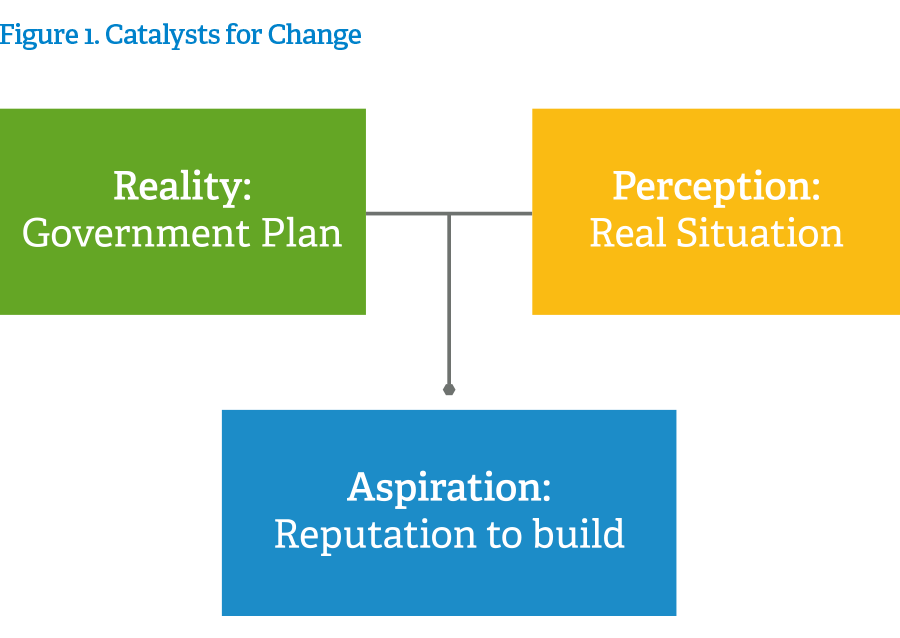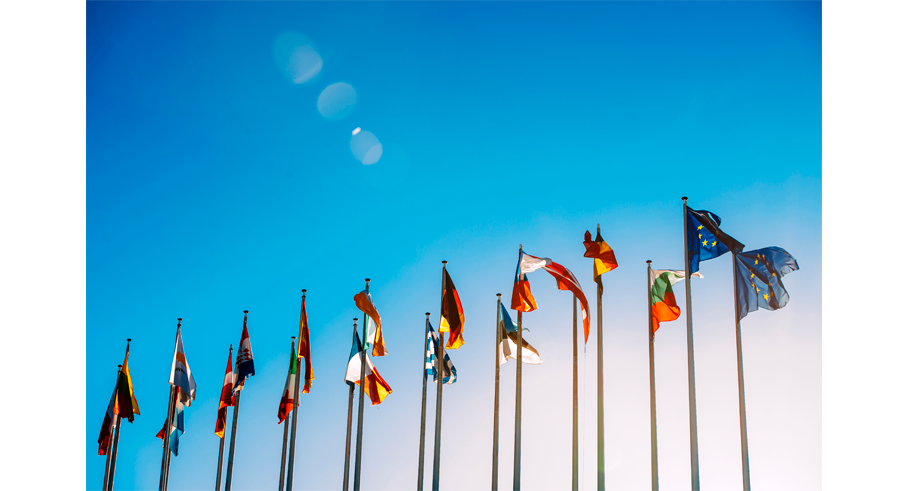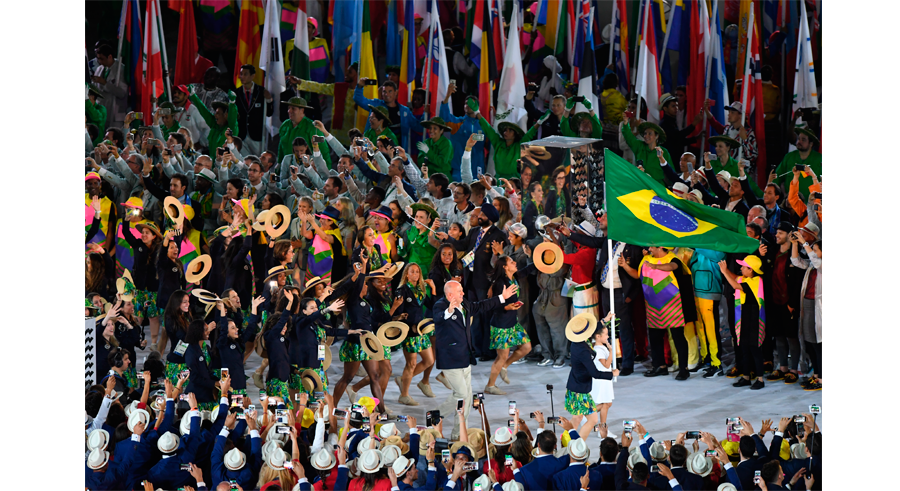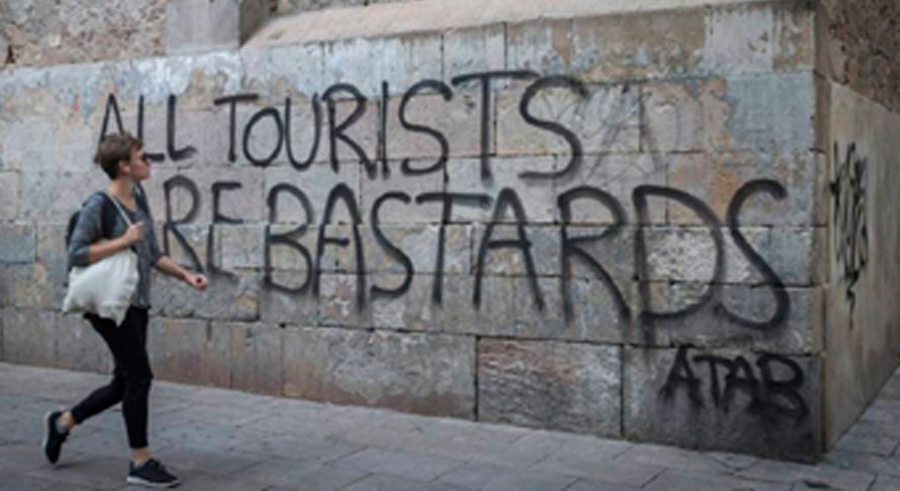In 2013, World Bank President Jim Yong Kim shared the center point of the institution’s strategy, a new vision called “Citizen Engagement.” In short, he decided to choose the projects the Bank would support with the help of citizen feedback, giving civil society more weight when it came to decision-making. Furthermore, his aim is for 100 percent of the Bank’s programs to have clearly-identified beneficiaries by 2018. Three years after this announcement, in January 2016, the World Bank presented some of the things they learned during this process, including the fact that programs with higher levels of citizen participation were found to be more effective and to generate a larger impact. Connected to this, the Bank also found it is critical to understand what mobilizes citizen groups to participate in the initiatives, as, according to various studies, what motivates them to participate goes beyond direct benefits, to include psychological and intangible factors, such as a sense of civic duty and belonging. In light of this, the World Bank concluded that, “we need to dedicate more resources to increasing the sense of citizenship among people and governments.”
We are seeing this same trend in the corporate environment as well. As it stands, what entrepreneur or manager would not want satisfied, motivated employees for their company—people who internalize the company’s vision and values to make them their own and bring them into their daily work? In a general sense, this is the aim of one of largest business and reputational pillars companies have been working on in recent years: talent engagement. Companies not only compete to attract and retain the best talent, but also aim to convert employees into company fans. This has clear benefits: Companies with highly-engaged staff have been found to achieve better financial results, higher levels of client satisfaction and increased productivity.
“This is the aim of one of largest business and reputational pillars companies have been working on in recent years: talent engagement”
In our ongoing digital revolution and hyper-transparent era, where a company’s, institution’s or association’s reputation is at the mercy of a YouTube video or leaked email posted on social media, those publicly involved and represented in projects of all kinds are more relevant to reputation strategies than ever before, as they are the ones who best know their virtues and shortcomings. Perceptions held by company’s stakeholders, regardless of their hierarchy or level, depend on performance and expressions; the internet has democratized influence. Richard Branson, CEO of Virgin, claims customers do not come first—employees do, with the idea that if you take care of your employees, they will take care of your clients.
ENGAGEMENT AND COUNTRY BRAND
Just as with the World Bank or in the business world, countries also find themselves faced with an opportunity to integrate citizens into their branding strategy to compete internationally to attract talent, both for investment and tourism. Citizen engagement—the emotional involvement of citizens and their conversations about their experiences—is key to maximizing the impact of a country’s brand strategy in terms of credibility and reach. A country brand should be developed from within.
Sweden provides a globally known, emblematic example of this. Last year, the country launched a campaign called “The Swedish Number,” which involved the creation of a phone number anyone, in any part of the world, could call to reach a Swedish citizen who would answer questions about why it is a good country to invest in, work in or visit. This campaign used hyper-transparency as a tool to increase its own legitimacy, but this was only possible with true citizen involvement and engagement.
A country brand strategy is not a logo with a cheesy tag line and costly advertising focused on hiding problems—rather, it should start with a vision, vocation and philosophy for the country to provide a way to understand the nation, then evolve from there until it achieves the desired goals. This strategy must cover both management and communication, impacting everyone’s present and future benefits, bringing citizens into the center of the narrative and storytelling and making decisions aligned with current context. This will involve careful positioning and government management, as it is the citizens who will star in this change and vision. They will translate both the positive and negative aspects to a variety of audiences, so citizens should be able to empathize with tourists or foreigners visiting their country. Spanish philosopher Jose Ortega y Gasset defined a nation as a dynamic system—much like a company—that is either integrating or disintegrating. According to him, “what defines a nation is a project of communal life; national groups do not live together to be together, but rather to do something together.”
WHERE TO START?
The initial steps involve deciding what a country wants to be and who can help it achieve that:

Vocation
- What type of country do we want to be? What type of image do we want to build, and is it based on the attributes we currently have? What attributes are we willing to create?
- What perception currently exists, inside and outside our borders? Does this complement or contrast the vision of what we want to be?
Internal public figures, such as leaders of public institutions, entrepreneurs and citizens, have a special interest in their country’s brand. They are public assets and should participate in the brand’s creation.
If citizens and media are involved, they become advocates and defenders of the country’s brand, making it their own and communicating it themselves, allowing the brand to take on a life of its own. This helps it spread organically and coherently, ensuring it is not just an artificial product, as is often the case with tourist institutions. If there is no alignment between the brand and the public, they will not communicate or promote it, creating a disconnect between the expectations visitors have and the reality they find.
“Si se consigue la implicación de los ciudadanos y de los medios de comunicación, éstos se convertirán en abogados y defensores de la Marca País”

Catalysts for Change
- Analyze and establish the stakeholders, both inside and outside the country, to recruit as allies for the change. These could include citizens, academics, media, entrepreneurs, investors, government actors, NGOs, industry professionals, etc.
To define the two key elements of “Reality” and “Perception,” it is necessary to use analytic and diagnostic tools. Ideally, a SWOT analysis should be carried out for the country to
analyze its differentiators, study internal and external perceptions, identify relevant benchmarks and understand its national, regional and global context. All this information helps when it comes to decision-making. Once it has been compiled, it is time to consult citizens, find allies and develop a strategy to integrate reality, perception and aspiration to define the country’s vocation:

RATIONAL vs. EMOTIONAL
As is the case of the World Bank, citizen engagement should not stop at appealing to rational sensibilities, but also welcome emotional reactions.
Emotional Reputation is where individual perception deviates from a country’s collective image. The collective image is “public opinion,” an intangible asset based on cultural, social and political stereotypes, constructed with the help of history and, to a certain extent, personal bias or experience. Public opinion gives rise to an objective vision, permeating the country’s brand development process.
“To create this reputation, countries must cultivate trust, image, notoriety and notability; in other words, the level of influence, audiences familiar with its attributes have, and their qualitative sense of this knowledg”
To create this reputation, countries must cultivate trust, image, notoriety and notability; in other words, the level of influence, audiences familiar with its attributes have, and their qualitative sense of this knowledge. These are also critical when involving a country’s citizens, as it is they who will have to live alongside the various audiences the country welcomes.
Rational Reputation is built on governability, institutional quality, quality of life and competitiveness. These are all visible and tangible, thanks to studies and rankings.
MESSAGE TANGIBILITY
A change in philosophy and thought may translate into actions and activities, which could in turn move the country’s positioning toward that sought both internationally and at home. Examples include large sporting events, culture, architecture, exhibitions, rankings, prizes, studies, etc., but how can the philosophical revival of a country be demonstrated? How can we overcome past perceptions to showcase a country’s new offerings and reality?
It is true that building a national image is subjective and may change over time.
It is also true that its position and permanence depend on a highly important element: its association with tangibles. This may take place through visible milestones for key audiences, drawing from the country’s offerings, perhaps having a “Big Shot” who can help increase cultural value of different attributes to improve reputation in alignment with the country’s brand strategy. This is very difficult to define; the country’s past needs to be taken into account, but so does its present and desired vocation of the future. Ideally, milestones, management and discourse should all be reading from the same page.

THE ROLE OF CITIZENS
Country management and communications have changed. We are moving ever closer to realizing concepts such as smart cities, citizen support 2.0 and open government. People do not just communicate through digital means; the digital environment is increasingly a part of people’s everyday environment, making the internet a key channel through which internal and external audiences can be reached. On the internet, millions of people and entities around the world interact, extending the conversations and exchanges that take place in boardrooms, shops, universities and streets daily.
“People do not just communicate through digital means; the digital environment is increasingly a part of people’s everyday environment”
Here, credibility is given to internet users themselves—they act as the final arbiters for what they see online every day. Therefore, it is necessary to create a strategy in which owned content, paid content and, above all, positive conversations among third parties and earned content are generated. These are what really leads to a multiplier effect on conversations, drawing greater engagement and, therefore, increasing the legitimacy of messages between various audiences. As with the political field, a grassroots strategy that sparks a social movement favorable to the country’s positioning efforts is necessary. This strategy should take the feelings and values of most citizens into account, as they will be the ones who legitimize these messages.
Online opinions are a very powerful tool when it comes to promoting or discrediting ideas. The internet and its channels should not be feared, but an appropriate strategy must facilitate its management and boost citizens’ conversations to fully involve and integrate them into the narrative.
MAKING A MEASURABLE STRATEGY
As with companies, countries also have reputations, and they have an influence on many areas. On the one hand, it has an undeniable economic effect, boosting exports, investments, talent recruited, consumption levels and tourism. On the other, it influences the credibility of the country’s institutions, respect toward its leaders, its role in the global community and the results of its public diplomacy efforts.
In this context, exploring and measuring is necessary. Reputation is a relatively new intangible asset for countries and their governments, which have begun to explore its management on this level through basic measurement mechanisms.
“(Reputation) has an undeniable economic effect, boosting exports, investments, talent recruited, consumption levels and tourism”
In general, management results are first measured for a single stakeholder (media) and market (the local one). It is necessary to learn to listen to alternate opinions, focusing on the most diverse possible groups. This will allow goals to be set for advances and comparisons made with competitors and benchmark entities; in terms of country’s brand strategy, comparison is essential. To determine whether a strategy is good or bad, the competition must be clear in terms of reputation and position: sunny tourist paradises with perfect beaches; wonders of the world; or business tourism attractions? And who is it targeting: foreign talent; entrepreneurs; university students; foreign investments in energy, renewable energy or raw materials; the foreign exchange market?
THE TEAM: COMBINED ACTION
It is increasingly common to find the “conductor of the orchestra” within the government organizations worldwide. This person prompts and supervises each action to forge a global vision for the country brand strategy. They must be independent from the current government management, and they tend to be responsible for the future vision of social development as well. Their role includes, to name a few responsibilities, advising the government, planning the budget for future projects
and making recommendations to boost social development. In other words, they supervise the country’s functioning, but maintain the ability to “step away” from the government’s day-to-day activities to maintain a wider perspective, which helps them focus on a medium- and long-term development strategy. From there, it is key for the country’s brand leader to respond to two questions each day: “What do we want to be, as a country?” and “What kind of country are we today?”
“It is increasingly common to find the “conductor of the orchestra” within the government organizations worldwide'”
A leader can seek, for example, to have their country considered as a host for the Olympic Games or World Cup, with all the elements involved in achieving that, such as showcasing its infrastructure capabilities, investments, culture, etc. Thus, it is this “conductor” who creates management opportunities for the country and drives this “quality of life” display by boosting diverse sectors, including tourism, infrastructure, health and education—but to leverage these sectors for a country’s brand, they must know how to manage them properly. Just as Joan Costa said in her article, Communications
Management System for the Construction of a City or Country Brand (Sistema de gestión comunicacional para la construcción de una marca Ciudad o una Marca país),
This is the essence of a country brand leader’s work.

However, this figure is only a manager, and powerful as they may be, they are just that. They should get to know and involve their citizens, coordinating efforts between various institutions and bodies to improve government management. This improvement should be communicated via a good PR team and reliable allies who seek to go beyond protecting and boosting the government’s image, but rather spread the country brand on a national and international level to generate a virtuous cycle.
To achieve this, numerous factors must come together. It is often complicated to unite them, but when they do line up, they create a great strategy for the country brand.
Solid Government Plan. It is no longer enough to appear to be a great country—first and foremost, you must be one.
Connection between Country Objectives and Strategy. These must be linked to the country’s existing strengths to boost those attributes. “Do not try to reinvent the wheel.”
Political Will. It is essential for company CEOs to forget their individual brands and political alliances, and act for the common good and seek what truly benefits citizens.
Include all Key Actors. Alliances must be created between the country’s opinion leaders, whether they live there or not.
Work from Within. Involve people and citizens so they are proud of where they live; they are the country’s face, and they will be the ones who reap the benefits of a successful strategy.
Comprehensive Strategy. Do not involve only those responsible for tourism; this should be a 360-degree project that brings together society, companies, institutions and the government.
TOURISM-PHOBIA
When there is no real link between the country’s brand and its citizens, with a shared vocation and strategy; clear objectives; appointed leaders; a solid team; helpful resources; specific milestones and results; a thoughtful plan; and tangible, widespread benefits, a logo with a cheesy tag line could become a problem—and even be rejected by the citizens themselves. This has been the case in various European countries, such as Italy, Greece, Holland, Spain and Portugal, and in the United States in the case of New York. Tourism-phobia is caused by a lack of citizen comprehension; if they only perceive the inconveniences of the strategy to attract tourists, but not the talent and investment it brings, the strategy will fail to foster integrated political and infrastructure development and support development, innovation and competitiveness. Citizens should be able to see the tangible benefits of tourism and, above all, feel like they are taking an active role in their country’s brand.



Juan Arteaga is General Manager of LLORENTE & CUENCA Mexico. Arteaga is a specialist in strategic reputational counsel, with 18 years of experience working with more than 100 clients and projects in Spain, Mexico and Latin America. He combines his professional work with his passions for innovation and teaching, collaborating on events such as the World Summit of Political Communication, the Mexican National Conference on Digital Marketing, the Mexican Government’s SME Week, the Colombian National Conference of Young Entrepreneurs and the Mexican Campus Party, as well as with educational institutions such as the Universidad Panamericana, TEC de Monterrey, Universidad Iberoamericana and Universidad Anáhuac, among others. He holds a degree in Computer Science from the Universidad del País Vasco and a postgraduate degree in Senior Management from the IPADE.

Anel Hernandez is Manager at LLORENTE & CUENCA Mexico. Hernandez is a communications adviser with 11 years of professional experience working in diverse sectors, including tourism, food & beverage, retail and technology. Her journey into the tourist industry began in 2011 at the Instituto Brasileiro de Turismo (Embratur). She has also collaborated with the Mexican Tourism Promotion Board and led the press cabinet for Tianguis Turístico México in 2014 and 2015, and presented Mexico’s latest campaign at FITUR 2014 in Buenos Aires, Argentina. She has also worked with major companies such as Alsea, Starbucks, Bimbo, Kellogg’s, Kleenex, Smartmatic, Xiaomi and Maxcom, among others. She holds a degree in Communications Science from the faculty of Political and Social Sciences at UNAM and completed a diploma in Digital Journalism at the Instituto Tecnológico y de Estudios Superiores de Monterrey (ITESM).




